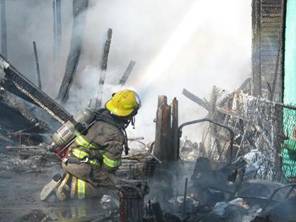

|
“Our Mission Is To Provide Quality Public Service, Public Education, and Professional Emergency Response” |
|
Monroe Fire Department 1810 Martin Luther King Blvd Monroe, LA (318)329-2474 Jimmie R. Bryant, Fire Chief |
| EMSNetwork Latest News |



|
International Association of Fire Chiefs |
|
International Association of Firefighters |

|
National Association For Search and Rescue |

|
National Association of Emergency Medical Technicians |

|
National Fire Fighter Near-Miss Reporting System |

|
Extinguishment After the fire is completely suppressed, or stopped to the point where it will not advance, leaving only small harmless “spot” fires, a resting period is ordered for the responders to “cool down” and regain some energy. This also gives more time for the residual smoke to exit the structure, either naturally or with the assistance of “positive pressure ventilation.” Positive Pressure Ventilation uses a powerful fan to increase the air pressure in one opening of the structure, usually an entrance doorway, forcing residual smoke and harmful gasses through another opening, where they disperse harmlessly into outside air.
After the residual smoke is removed from the structure, the EMS/Safety Officer will direct a survey of the interior of the structure using an air monitor, which evaluates the oxygen content, the carbon monoxide content, and other harmful gases. This device is taken through each room of the structure where it evaluates the air content, sounding an alarm if the air is found to be unsafe. This helps insure that the responders can safely work without the cumbersome SCBA units, and that when the resident returns to the structure, that there will be no harmful gases remaining. |
|
Fire Suppression—The Life Cycle of a Structure Fire Response |
|
Next: Investigation |

